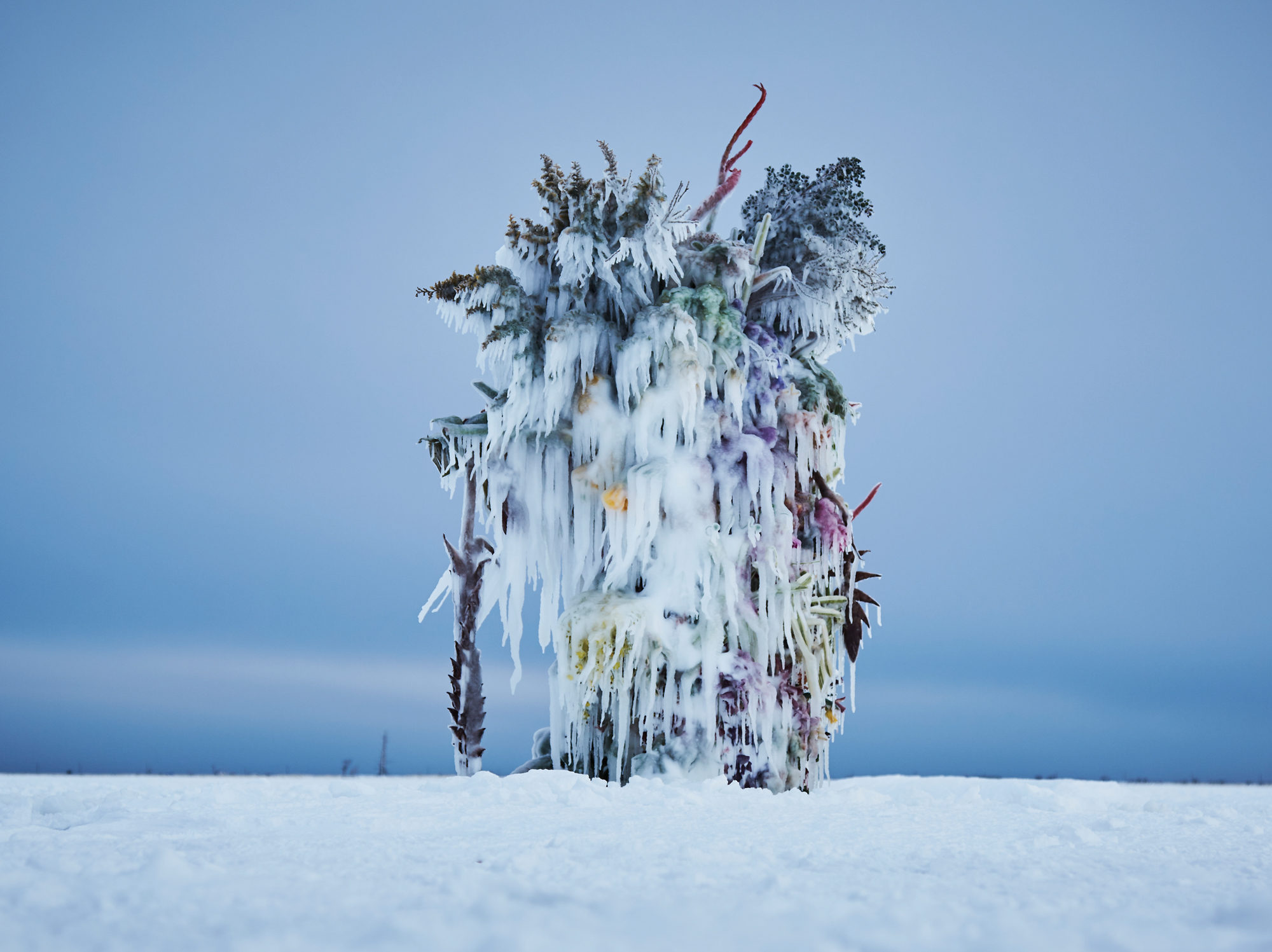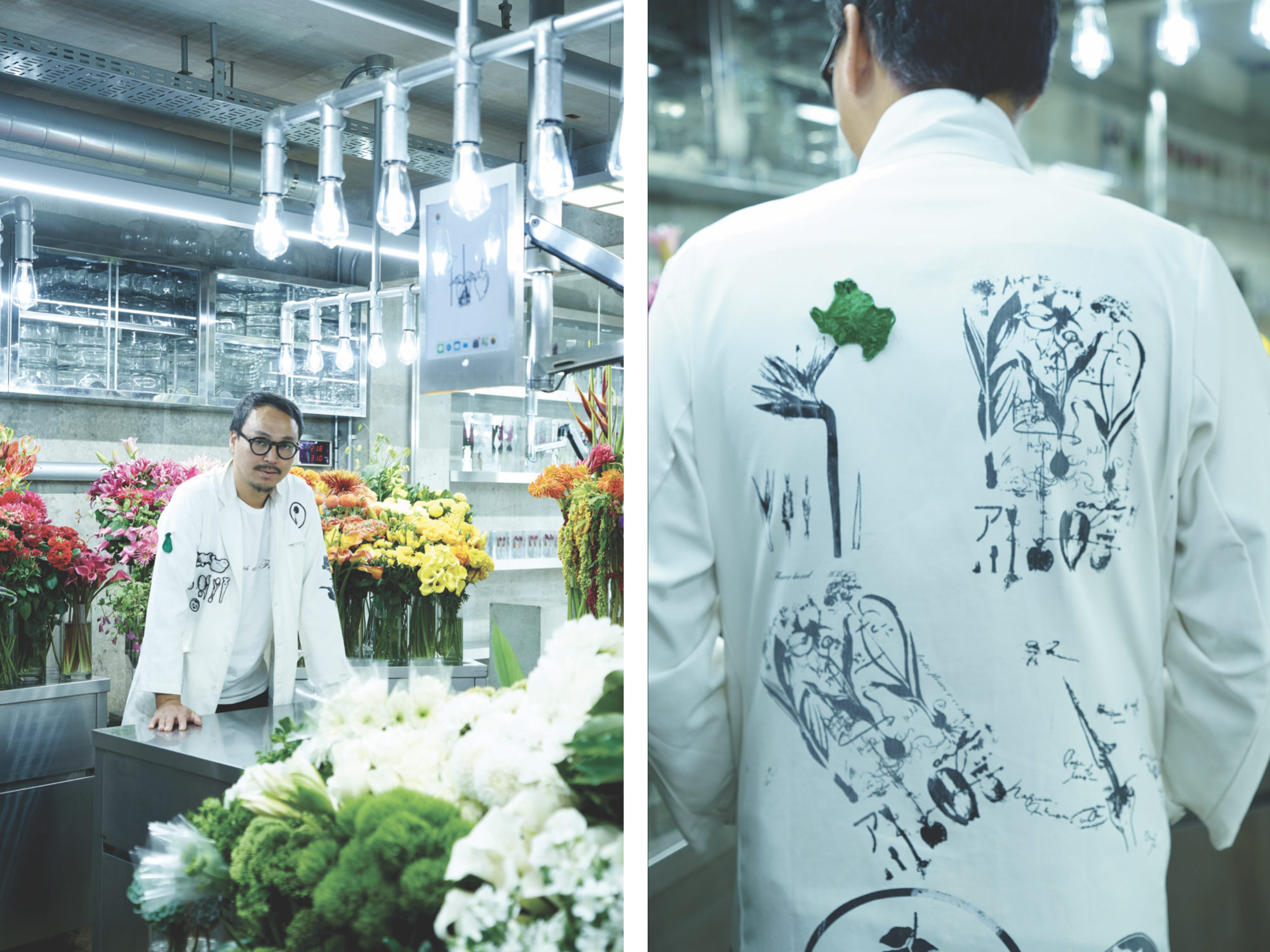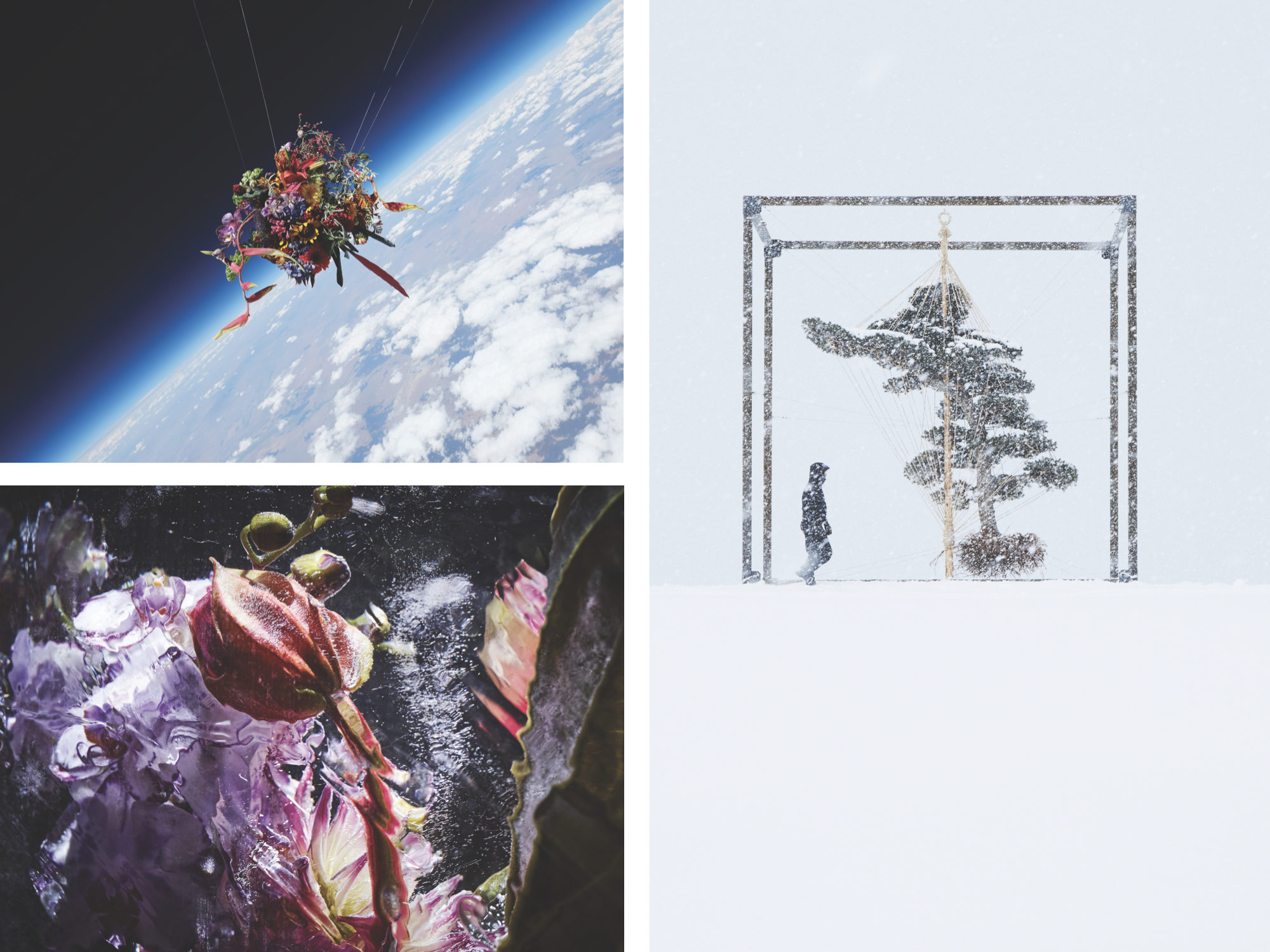Can floral arrangements be rock ‘n’ roll? If they come from Makoto Azuma, they surely can—and not just because the Japanese flower artist has played bass in a grunge band. In his hands, flowers find themselves in impossible places, doing unnatural things: Bonsai trees travel to outer space and the deep sea; blossoms are encased in ice blocks and planted onto a Dries Van Noten runway; unruly bouquets are used as props in Danish punk rock performances.
At Jardins des Fleurs, the retail shop Azuma operates on a quiet backstreet in Tokyo’s Aoyama district, an unassuming steel staircase at the entrance leads to a completely refrigerated subterranean space more reminiscent of a lab than a florist’s studio. There, white-coated workers shuffle between stainless steel tables, clipping and arranging ultraviolet cattleya orchids. Some of the staff are working on one-of-a-kind bouquets for clients; others are conducting what Azuma calls “floral experimentations” for Azuma Makoto Flower Laboratory (AMKK), the botanical art collective he cofounded with photographer Shunsuke Shiinoki. Similar to the way sushi chefs maintain important relationships with their suppliers at Tokyo’s largest fish market, Azuma visits the Ota flower market three times each week, buying his flowers directly from wholesalers he’s worked with for years. Like a master chef, he uses his own custom tool: a pair of handmade iron clippers crafted to fit his hand.
It’s through AMKK that Azuma has made his most astonishing creations, from the installations he’s produced for clients like Dries Van Noten, Fendi, and Hermès to the bonsai he launched 100,000 feet into the earth’s stratosphere as part of the 2014 photo series “Exobiotanica.” Thanks to such high-profile projects—which also include large-scale public works, an animated film, and the floral headpiece Rihanna wore last year on the cover of British Vogue—he has roughly 125,000 followers on Instagram. “With human hands, flowers move in a lively and dynamic way, as if they are living creatures,” Azuma says. “They show us explosive beauty while transforming their shape in each environment.” AMKK has also become a fertile laboratory for new ideas for his retail business. “In my artworks, I try to explore a new aspect of the beauty of flowers, and then that inspiration goes back into bouquets for the customer,” he says.
It was his part-time job working for a florist, taken when Azuma was a young musician, that originally sparked his interest in ikebana, the classic Japanese art of floral arranging. Azuma’s aesthetic is rooted in the avant-garde ikebana of the 1970s, a time when the traditional art was at its most experimental. But his approach to flowers is his own, and very much of our time. His goal, he explains, is to present flowers in mesmerizing new forms that can influence the way we view and value the natural world. “There are so many climate and environmental issues, and to solve them we need to turn our attention to nature more than ever,” he says. “Humans can’t survive without nature. Connecting people with flowers is one way I can create a new dialogue.”
Azuma is less interested in engaging with flowers as a universal symbol of beauty than in their usefulness for provoking existential questions. Best described by seitoshi, the Japanese word for life and death, the notion is evident in Azuma’s series Shouting Flowers. A time-lapse video capturing botanicals springing to bloom before fading and dying, it’s a poignant illustration of beauty and decay. What could be more rock ‘n’ roll than that?



